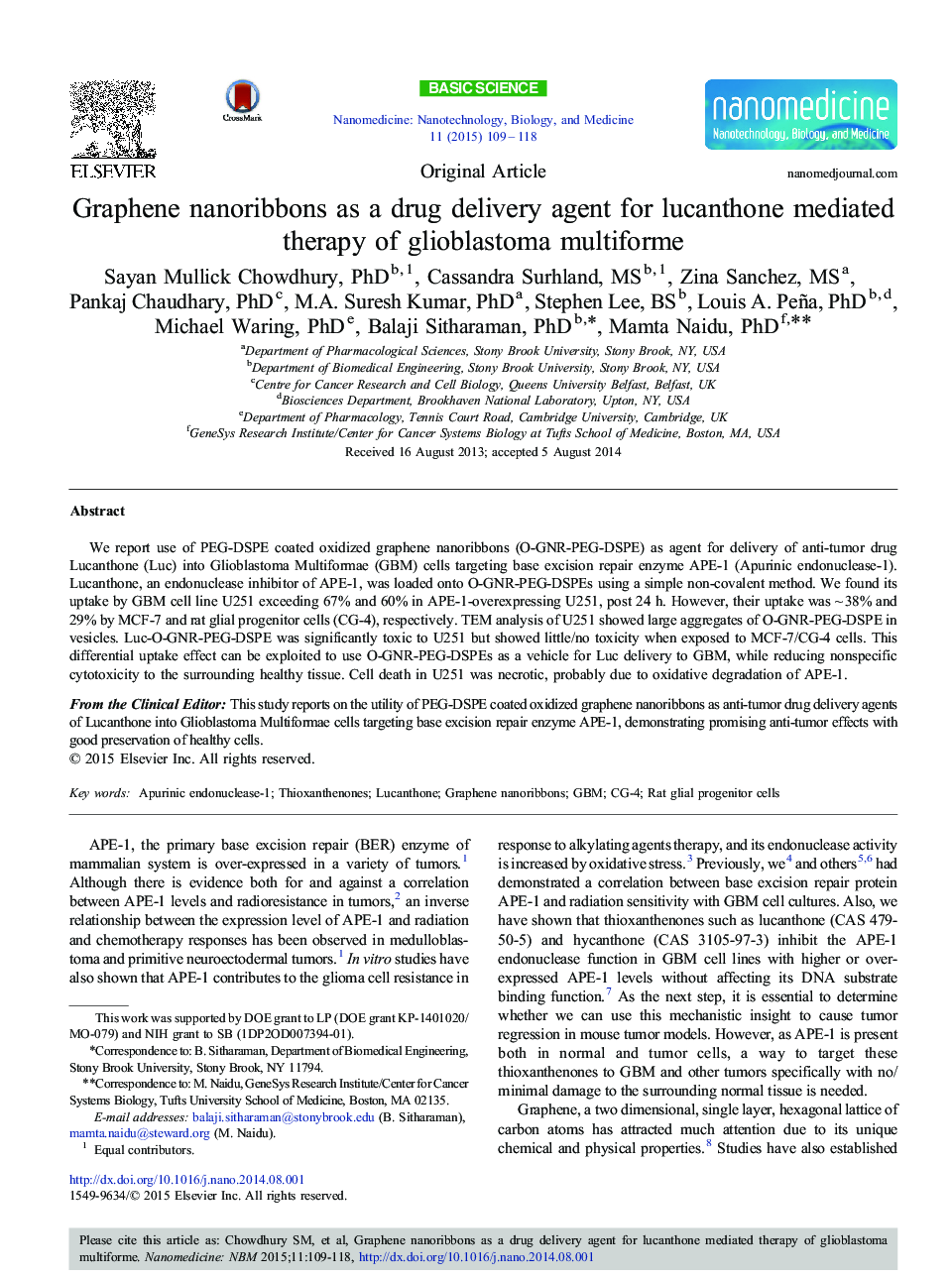| کد مقاله | کد نشریه | سال انتشار | مقاله انگلیسی | نسخه تمام متن |
|---|---|---|---|---|
| 877416 | 911025 | 2015 | 10 صفحه PDF | دانلود رایگان |
We report use of PEG-DSPE coated oxidized graphene nanoribbons (O-GNR-PEG-DSPE) as agent for delivery of anti-tumor drug Lucanthone (Luc) into Glioblastoma Multiformae (GBM) cells targeting base excision repair enzyme APE-1 (Apurinic endonuclease-1). Lucanthone, an endonuclease inhibitor of APE-1, was loaded onto O-GNR-PEG-DSPEs using a simple non-covalent method. We found its uptake by GBM cell line U251 exceeding 67% and 60% in APE-1-overexpressing U251, post 24 h. However, their uptake was ~ 38% and 29% by MCF-7 and rat glial progenitor cells (CG-4), respectively. TEM analysis of U251 showed large aggregates of O-GNR-PEG-DSPE in vesicles. Luc-O-GNR-PEG-DSPE was significantly toxic to U251 but showed little/no toxicity when exposed to MCF-7/CG-4 cells. This differential uptake effect can be exploited to use O-GNR-PEG-DSPEs as a vehicle for Luc delivery to GBM, while reducing nonspecific cytotoxicity to the surrounding healthy tissue. Cell death in U251 was necrotic, probably due to oxidative degradation of APE-1.From the Clinical EditorThis study reports on the utility of PEG-DSPE coated oxidized graphene nanoribbons as anti-tumor drug delivery agents of Lucanthone into Glioblastoma Multiformae cells targeting base excision repair enzyme APE-1, demonstrating promising anti-tumor effects with good preservation of healthy cells.
We used O-GNR-PEG-DSPE as a reliable, non-toxic vehicle for delivery of APE-1 inhibiting Lucanthone into GBM tumor cell lines. LUC-O-GNR-PEG-DSPE particles showed 60% or more uptake by CMV/U251 and A1-5/CMV/U251 where as the uptake by MCF7 and normal CG4 glial cells was much lower (38% and 29% respectively). Different concentrations of Luc (5–80 μM) loaded onto O-GNR-PEG-DSPE showed lower toxicity in the exposed cells compared to the free drug, due to possible slow release of the drug from this particle, which ensures minimum non-specific release of the drug from the particle once it is injected in vivo.Figure optionsDownload high-quality image (64 K)Download as PowerPoint slide
Journal: Nanomedicine: Nanotechnology, Biology and Medicine - Volume 11, Issue 1, January 2015, Pages 109–118
